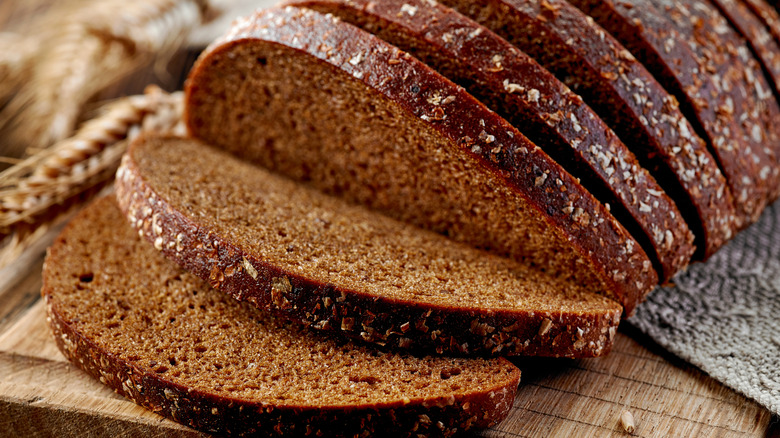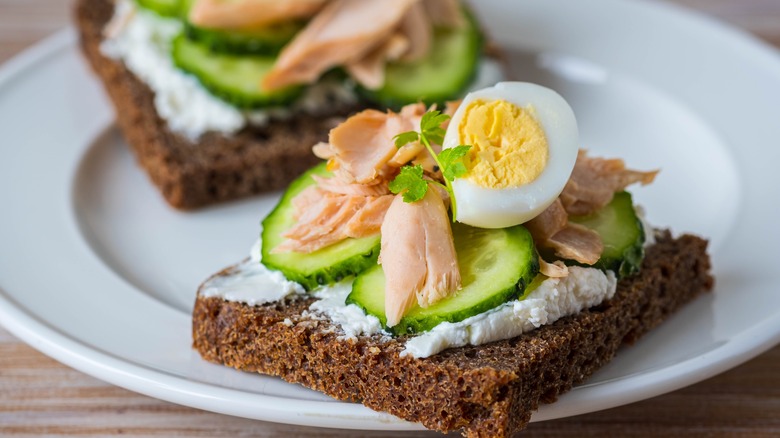Scandinavian Vs. American Rye Bread: What's The Difference?
Whether you are a fan of Scandinavian rye or American rye bread, chances are you've at least heard of one of them. If you haven't, there's always rye whiskey. While it is easy to assume that these two breads would be relatively similar, they, in fact, couldn't be more different. Before we jump into that though, let's start with the basics: what is rye?
Rye, sometimes referred to as cereal rye or winter rye, is a cereal grain (via Britannica). In the modern day, rye is grown and harvested in Europe, Asia, and North America. Although it also contains gluten, loaves of bread that are made solely from rye tend to lack the same elasticity found in wheat-based loaves. Given this, many areas around the world continue growing rye solely for animal feed. In others, however, rye bread continues to have its place in modern diets, specifically the U.S. and Scandinavia. The breads do differ though, and here's why.
One grain, two breads
Actually, there are multiple types of rye breads — we can't forget about the classic German pumpernickel – but today we are focusing on two. In America, the idea of rye bread goes hand in hand with deli-style sandwiches. It tends to be long, almost oval in shape, making it perfect to load up. As The New York Times explains, although descending from more traditional Middle and Eastern European traditional rye breads, the modern-day American rye bread is typically made from a combination of wheat and rye flours, giving it a texture and consistency that mimics other breads while maintaining the sour tang of a rye bread.
In Scandinavia, on the other hand, the rye bread served today follows the more traditional path of consisting of only rye flour. Although the breads differ slightly from country to country, one of the most popular is rugbrød, found in Denmark (via Nordic Food & Living). Serving as the base for smørrebrød, or open-face sandwiches, per The New York Times, Nordic Food & Living describes rugbrød as a dense bread made with additional seeds, grains, and cracked rye. Usually incorporating a sourdough starter, it is less sweet and has a harder crust than other breads. While like American rye bread, it can include some bread flour as well, its texture is dense and filled with additional seeds. Even though the two differ, we're happy to see this grain still being used for bread!

